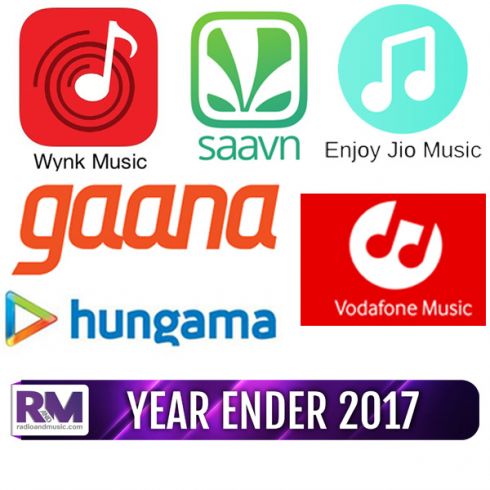

MUMBAI: From weekly Binaca Geetmala on the radio to the weekly Chitrahaar on television to revamped radio channels to music apps, the music industry has gradually shifted gears. The scene of seeing our grandparents glued to their blaring radio sets have now moved to seeing the next generation constantly wired to their headphones. Be it a personal music player or easy access to music via internet, music stays the common constant in all generations.
Music apps and streaming platforms have taken the industry by storm and given a stiff competition to music channels. With two of the prime most music channels shut shop in 2017, namely Channel V and Disney Bindass Play, it proved that out of many reasons for shutting channels, one of the biggest reason was the influx of music apps. Both the channels had hit a low of below 10 per cent market share before they became obsolete.
Also, with every Telco player having its own music streaming platform and with more than accessible handheld devices, and even more easily available data the use of apps have seen a boom in the recent past. By June 2017 India had a 420 million staggering base of mobile users, with which the "Digital India" movement of the current government has gained more momentum. Also, the launch of Reliance Jio has smashed the high data prices barrier by welcoming middle class and lower strata of society in the e-world and access to music apps became much easier.
Although some industry experts claim that audience still prefers viewing the song on a channel as they enjoy visual experience. However, YouTube being so handy, the consumer prefers watching and listening to the song on the move rather than wait for it to be aired on TV. Since its launch in 2008, Youtube has been the go-to option for content consumption for free, even for music segment.
While advertising has been a main source of revenue all throughout, the current advertising is aggressive and sometimes forced. Some music apps like Hungama also have ad-free zones, but those zones are subscription based. Therefore, the revenue garnered is of 70 per cent advertisements and 30 per cent of subscription, keeping the scale of the advertisements still higher. It was also noted that over 78 per cent of internet users acquire stream ripping software within, which puts maximum of the user base on the side of the fence of subscription system.
Artist Aloud VP Soumini Sridhara Paul shares, “While 2016-17 was exciting for music streaming apps. Even with Independent music, when we began we believed in the content, because we had a good distribution network. Coke Studio worked because of its supreme content that it brought with each season. Globally with Apple Music and other international platforms, the road is simpler because the subscription mindset is well grained in the system, in India however, access means free and that is a challenge each home-grown platform is working towards.”
In the year of 2017, music apps saw a YoY growth of 43 per cent globally, according to the recently published Flurry’s Global Analytical report, which tracked over a million applications across a spectrum of 2.6 million applications. The growth in music and entertainment app industry comes close to that of the shopping apps, reinstating the huge shift of consumers to handheld devices.
Saavn, an international music streaming service, that is widely used in India, recorded over 29 million streams on Saavn 38 million views across YouTube and other streaming platforms for its Artist Originals track 'Bom Diggy' With more than 7 million streams on global platforms including ITunes, Spotify, Soundcloud and Apple Music, after the release of Bom Diggy, the streaming service also raised the bar by forging an innovative partnership with Snapchat last year.
Apart from that, these apps also offer music in various languages, making it more preferred at the grass root level and are compatible to every operating system from ios to android.
However, it is a chart of the growth of viewers on digital platforms is ambiguous as the counting happens on the basis of views and not on the basis of unique viewership. Therefore, when a song hits certain numbers of views, it could also be because the same person might have viewed the song multiple times.
The future of music apps seems to belong to the ones who constantly innovate and bring something new to the table. Despite a matured market for applications in general, for media and entertainment, the future has still not saturated, due to relentless invention in the Smartphone sector. The music streaming apps have also given a leeway to the independent musicians to create and present their own work, proving it to be a flourishing platform them.
Let’s stay tuned in for more in 2018.